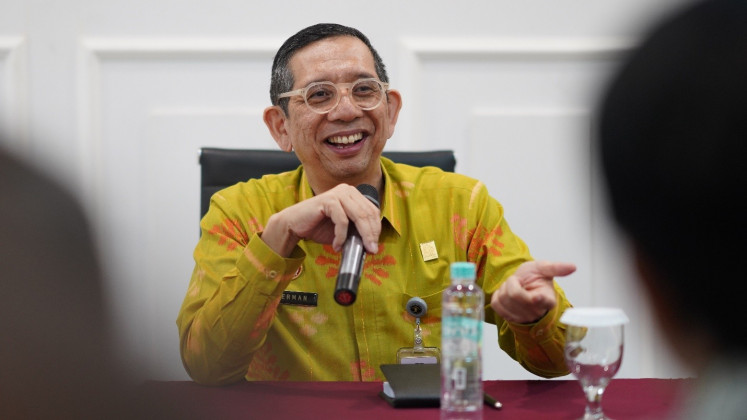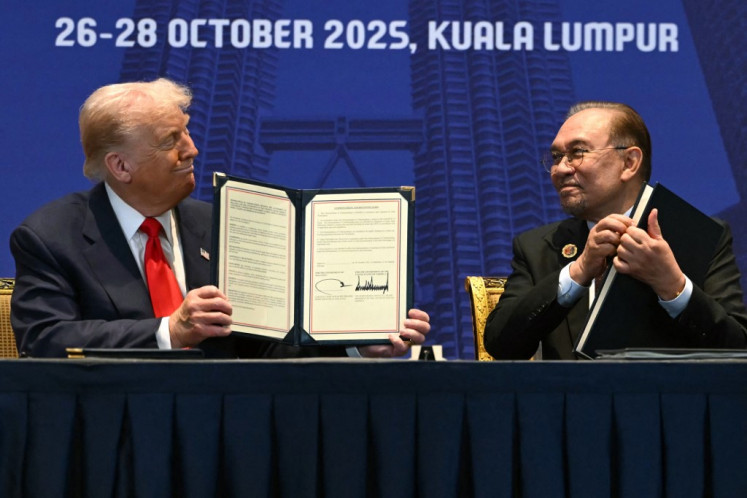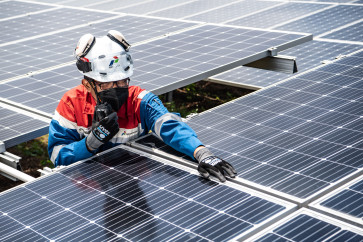Popular Reads
Top Results
Can't find what you're looking for?
View all search resultsPopular Reads
Top Results
Can't find what you're looking for?
View all search resultsNew rule on renewables pricing paves way for ‘greener’ EVs, NRE investment
Presidential Regulation No. 112/2022 is expected to help EVs become cleaner as it stipulates the early retirement of coal-fired power plants and provides a “relatively good” pricing scheme for electricity generated from renewables, making NRE projects more appealing to investors.
Change text size
Gift Premium Articles
to Anyone
T
he government aims to jumpstart stalled renewable energy projects through a recently issued regulation, which pushes the establishment of large-scale renewable energy plants, making the utilization of electric vehicles (EVs) greener as they will eventually use electricity from eco-friendly sources.
Presidential Regulation No. 112/2022 concerning the acceleration of renewable energy development for electricity supply, in effect since Sept. 13, eliminates feed-in-tariffs in the renewable energy pricing mechanism, prohibits construction of new coal-fired power plants and provides fiscal incentives to encourage investment in new and renewable energy (NRE) projects.
Institute for Essential Services and Reform (IESR) executive director Fabby Tumiwa expected the new regulation to help EVs become cleaner as it stipulates the early retirement of coal-fired power plants and provides a “relatively good” pricing scheme for electricity generated from renewable energy power plants, making NRE projects more appealing to investors.
“The success of our [energy transition efforts] depends on how fast [state-owned energy utility] PLN can retire its coal-fired power plants and establish more large-scale renewable energy plants,” he told The Jakarta Post on Tuesday, saying PLN needed to retire coal plants with a total capacity of at least 5 gigawatts (GW) by 2030 to achieve Indonesia’s net-zero target by 2050.
Furthermore, the regulation also revokes Energy and Mineral Resources Ministerial Regulation No. 50/2017, the provisions of which were deemed to have made renewable projects unbankable, a number of developers said, as previously reported by the Post, making it hard for them to access financing for their projects.
In the span of 2015—2020, the power generation capacity of NRE plants increased by 1,469 megawatts (MW), marking an average annual growth rate of 4 percent. This figure is less than half of the 3,000 MW annual capacity increase needed for NRE to make up 23 percent of the national energy mix target by 2025, IESR data show.
Indonesia needed an additional 14 GW of NRE power generation capacity from 2020 to 2025, Fabby said in a separate interview, which meant the country would still need to add 13 GW of capacity in the next three years.


















